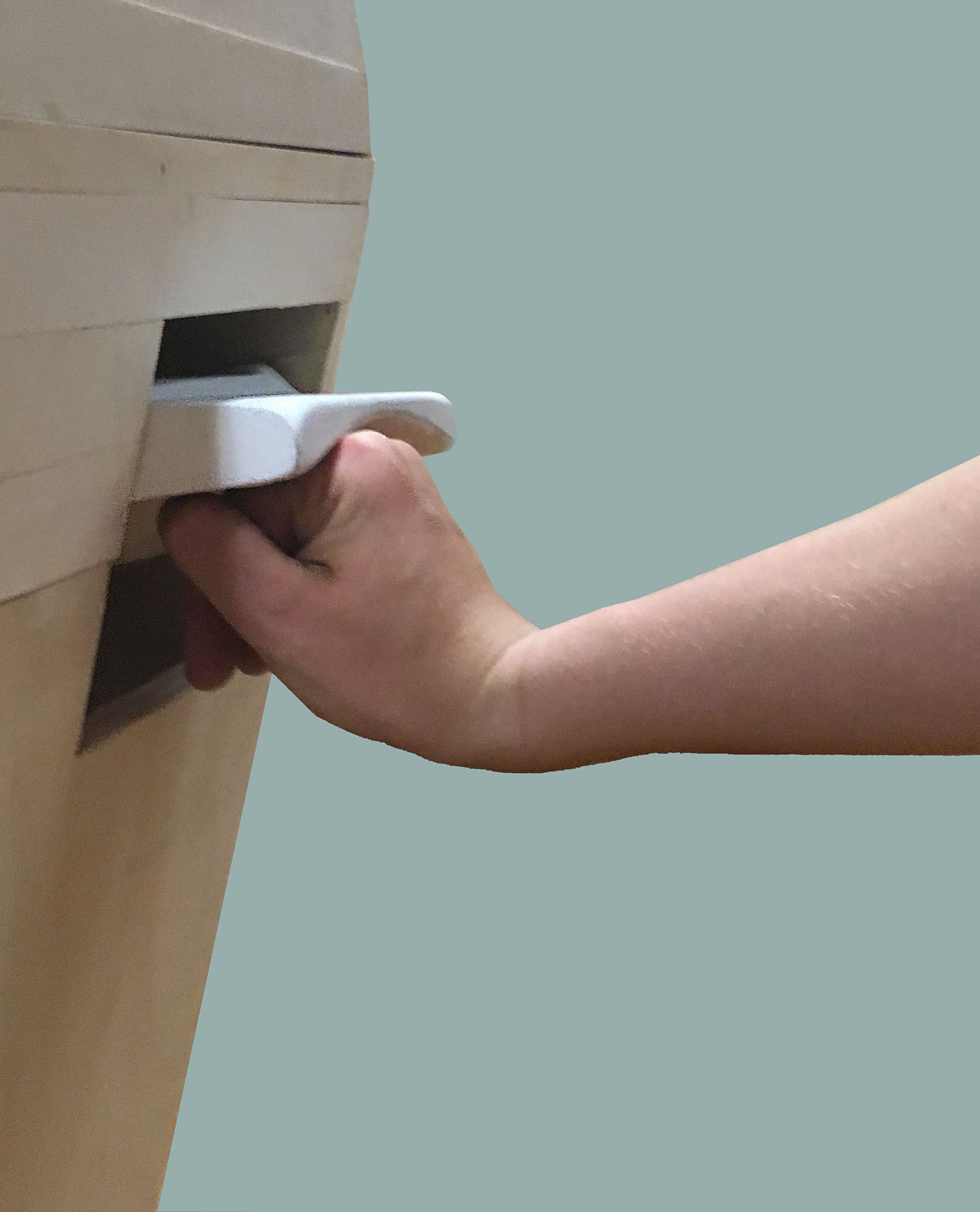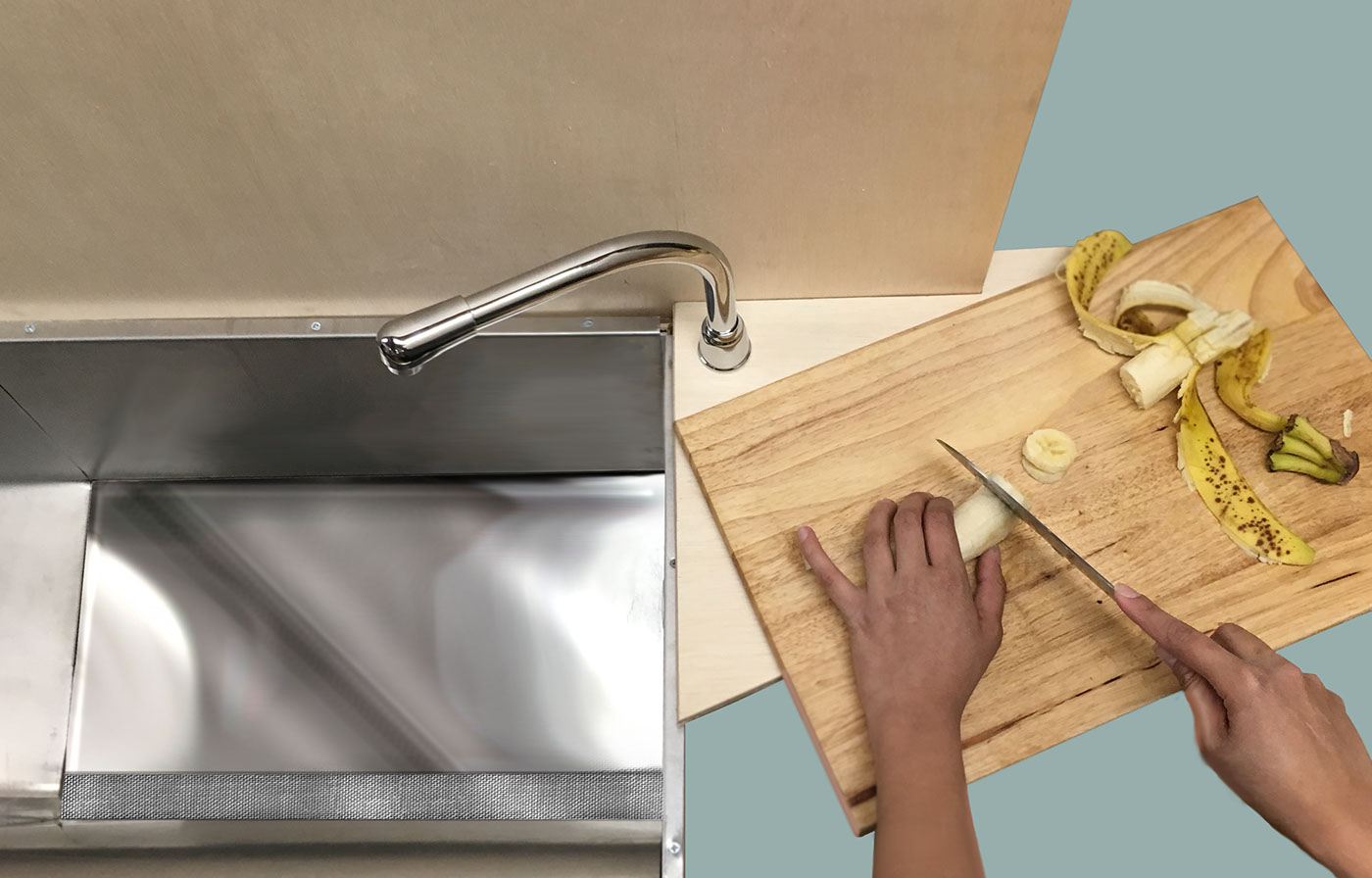
Right now we worry solely about getting the product to the consumer - it doesn't matter how we do it as long as it's cost-effective in the short term. In the home, this approach is embodied in milk cartons, cereal boxes, plastic bags...single-use packaging is a convenient and therefore user-friendly product. How can we meet the user's short term needs with consideration for the earth in the long term?
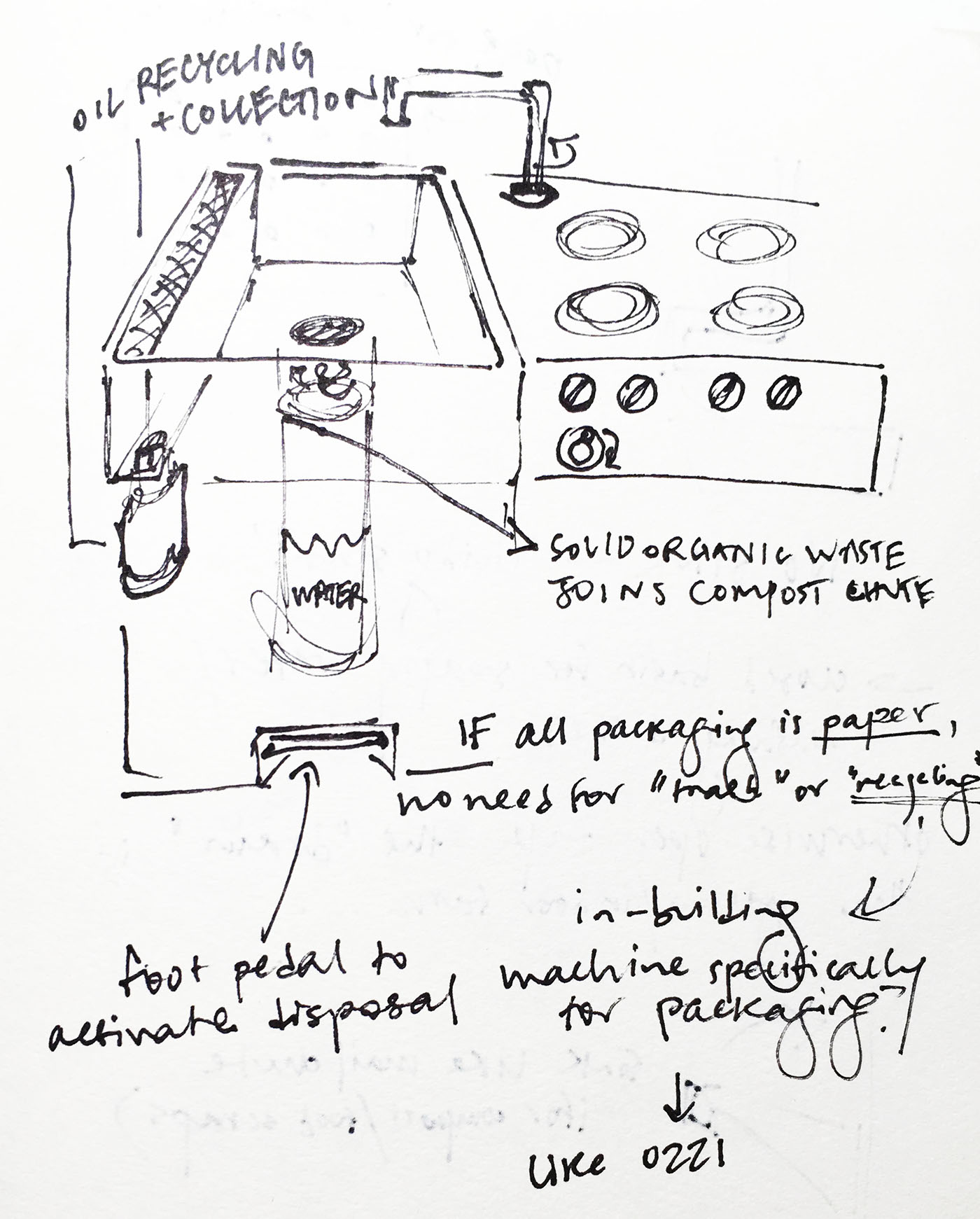
"I would compost if I had the system to do it in."
-Maggie, user expert
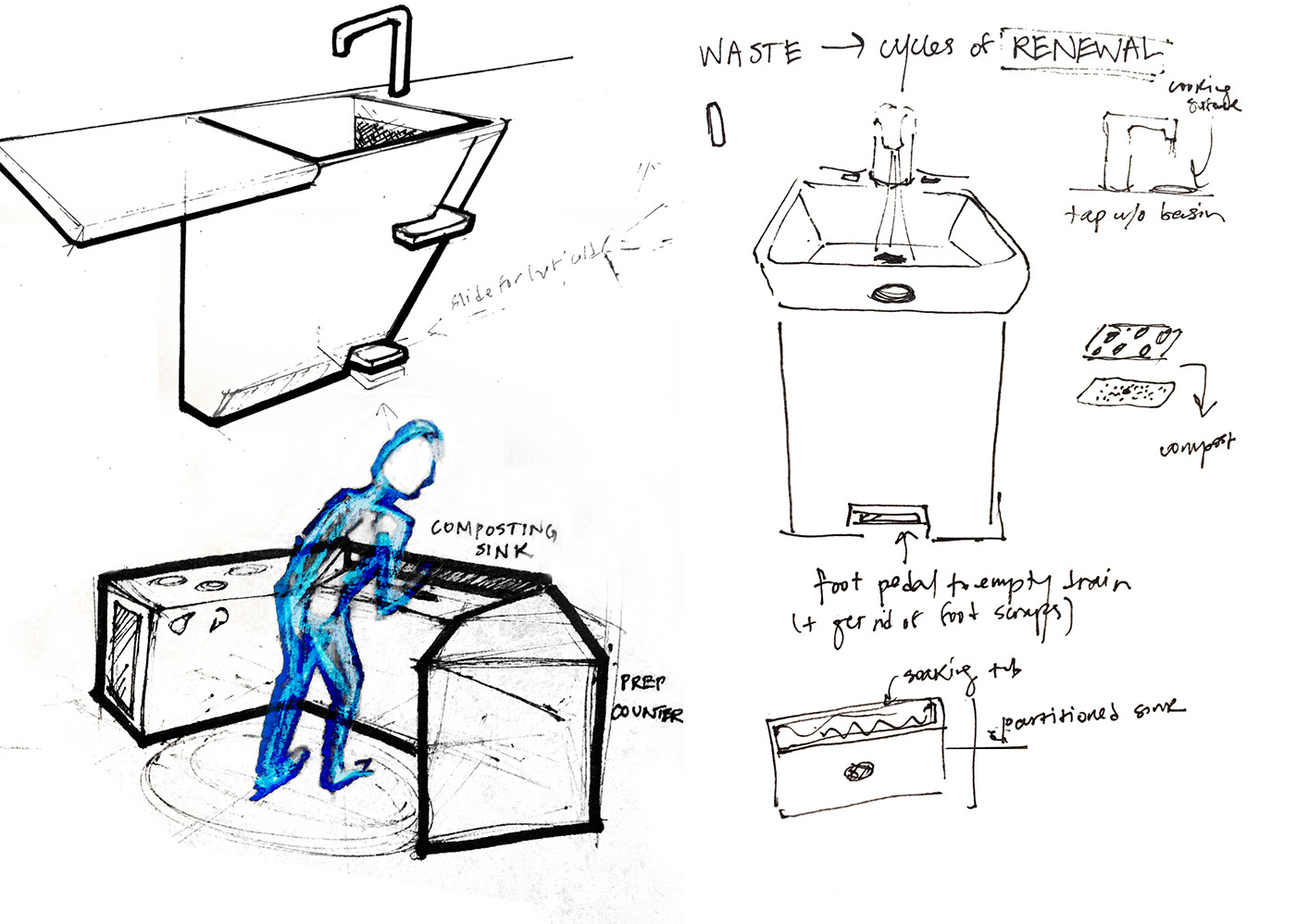
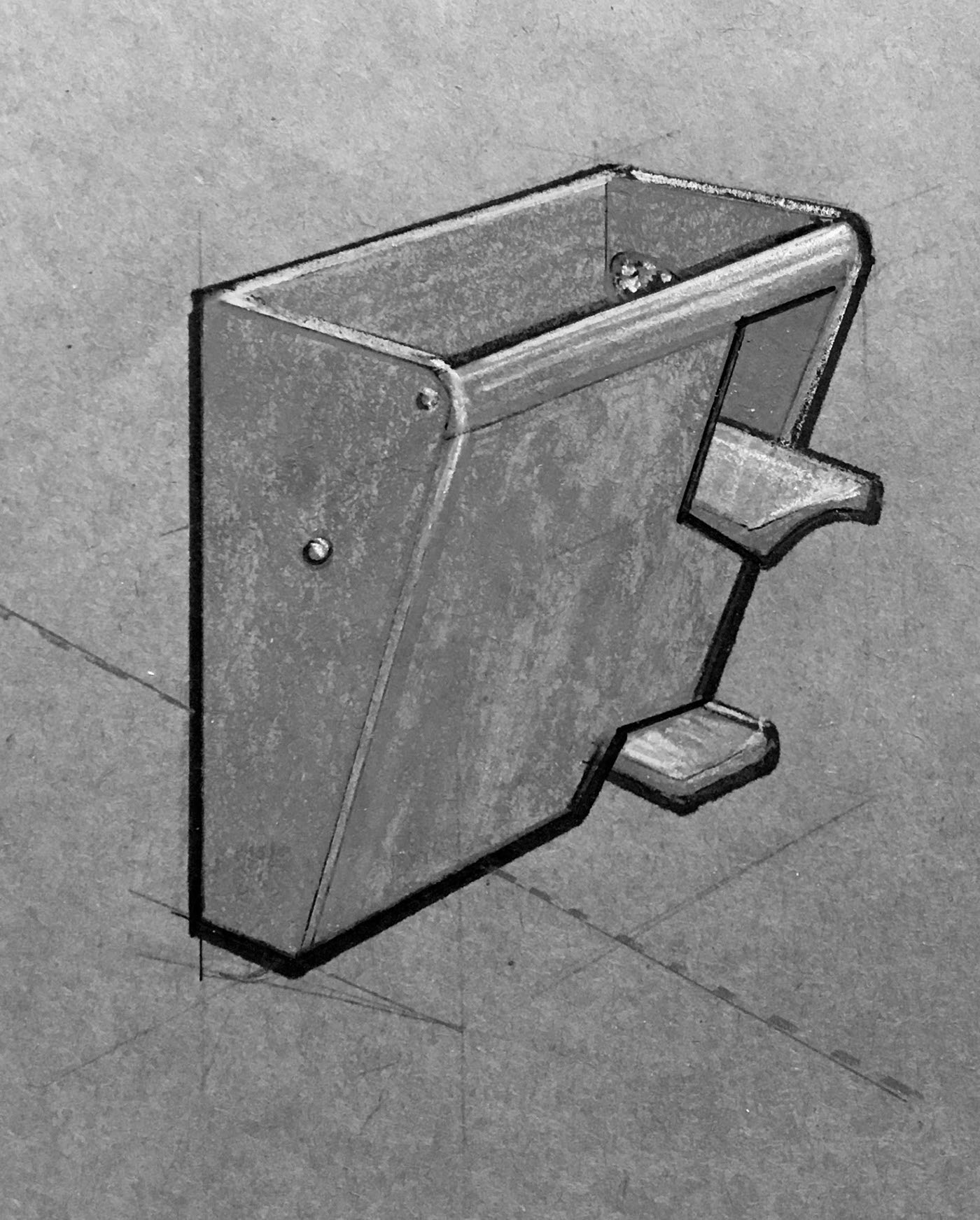
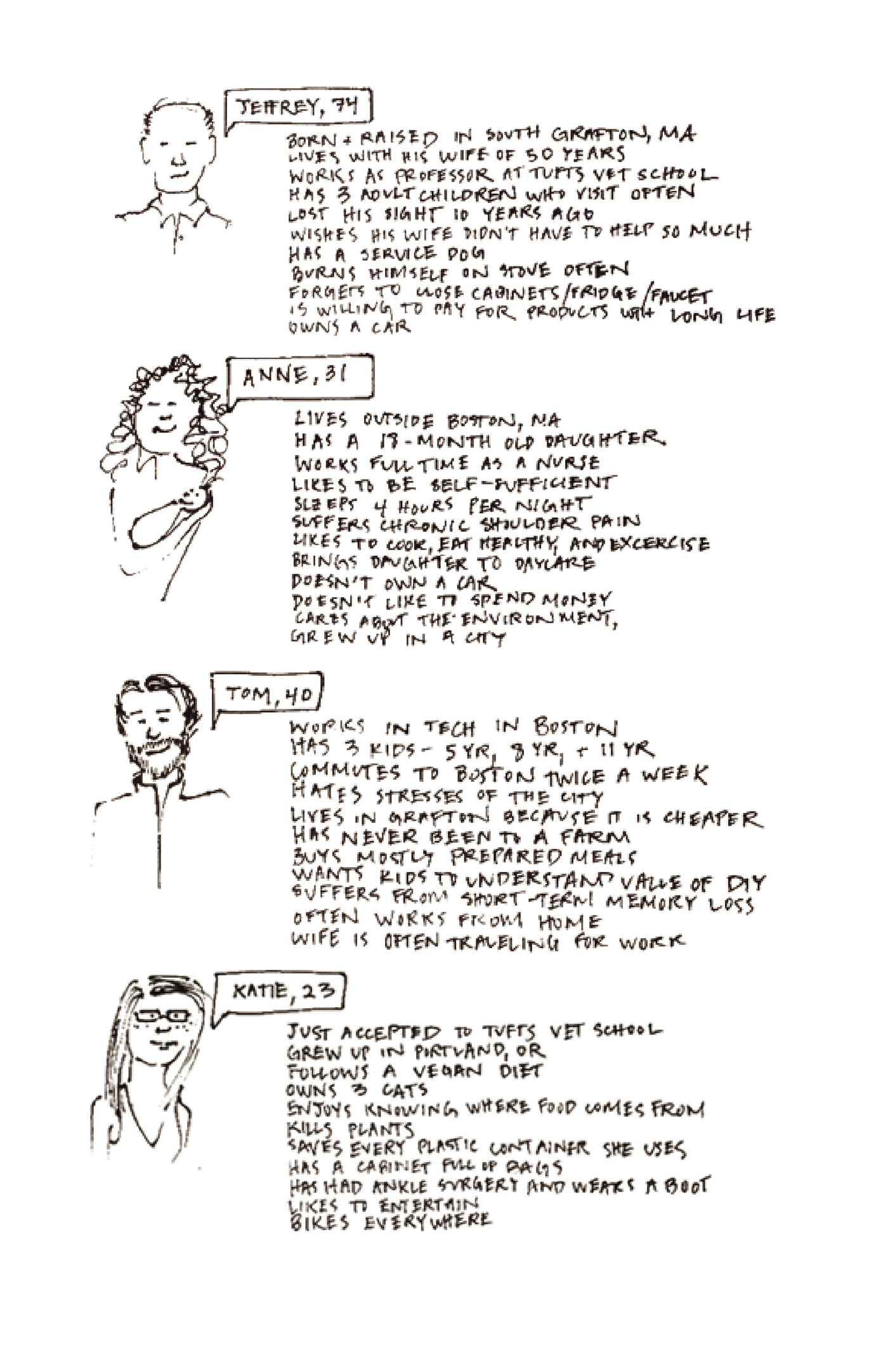
The divisions of the kitchen represent a larger division within our systems of domestic consumption and waste. Your kitchen has been designed for you to go to the store, buy milk and cereal, eat your fill, then dump what’s left in your trash can.
This system is built solely around the user experience, aiming to make it as easy as possible for you to continue buying food and throwing away what you don’t want. It’s an immediate way to get what you want in, and what you don’t out.
The problem, therefore, is not the user. It would be wrong to blame the mother of four for not installing a compost system in her backyard. Even if she is aware of that she should use her organic waste for all it’s worth, it is unlikely that she’s willing to donate what little spare time she has to make an essential aspect of her domestic life less convenient.
This philosophy was confirmed by discussion with user experts from the Institute for Human Centered Design in Boston, MA. One woman pointed to her garbage disposal as a “life-changer.” No longer having to reach into her sink to remove a piece of old, wet food that had become lodged in the drain, she felt liberated in her home.

Thoughtful waste disposal requires knowledge, time, money, space, and patience; unfortunately, very few people are blessed with such luxuries in their daily lives. This system was designed to be as accessible as possible to a variety of lifestyles. As this is built directly into the home, there's no obligation on the part of the user to make the decision to compost and the investment in a new waste system. Nobody wants to harm the earth, but stewardship is not a priority when you're worried about putting food on the table.
How do we combine the ‘inskinerater’s’ ease of use with the process of domestic composting? This question is what led to the ultimate solution, combining once distinct functions within a singular system.

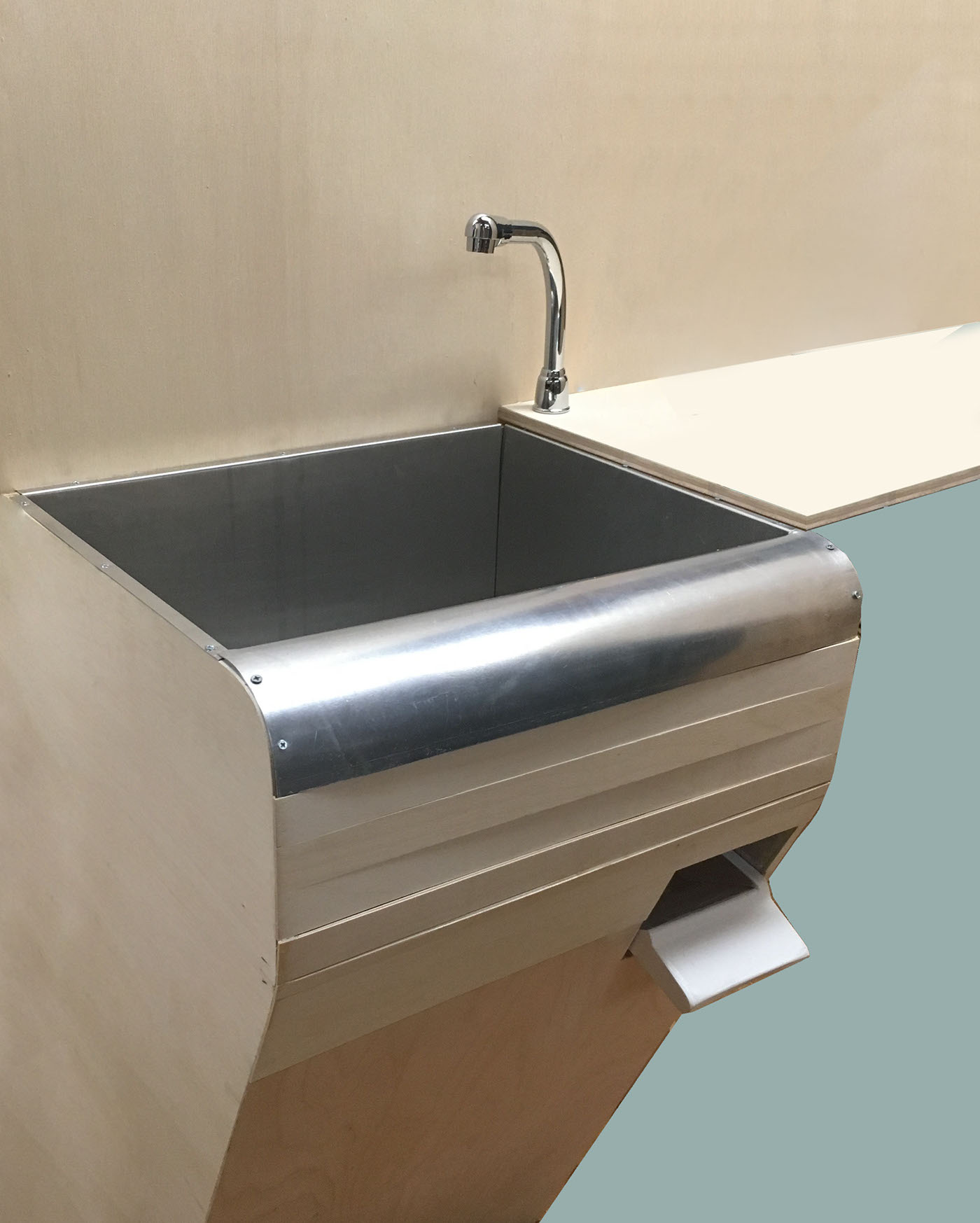
I finally arrived at a concept that combines the benefits of several disparate systems. Rather than throwing your organic waste “away,” I propose a way to handle waste sustainably with no additional work or “ick” factor.
A knee-operated pedal inspired by the step bin allows for easy removal of compostable waste through the rear of the kitchen sink. Because this solution is built into the structure of the kitchen, it removes the responsibility to make the “sustainable choice” from the user and places it in the hands of the architect and/or developer.
There may even be motivation to install such a system within government susbsidized housing. As the building’s organic waste is collected in a communal windrow, where it is broken down into rich compost, the community is generating revenue. The compost can be sold to local farmers and agricultural institutions, returning the financial gain to the building that produced the waste. What if composting was like paying your taxes?
